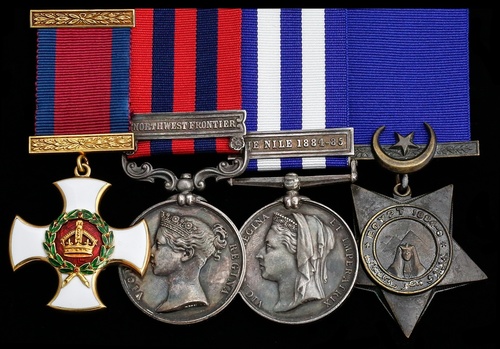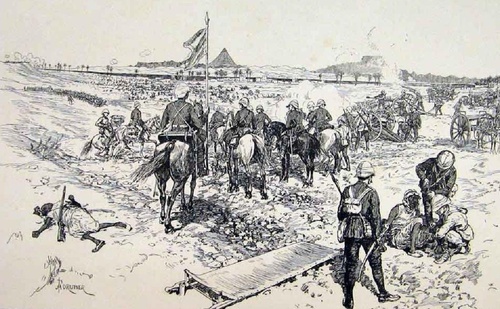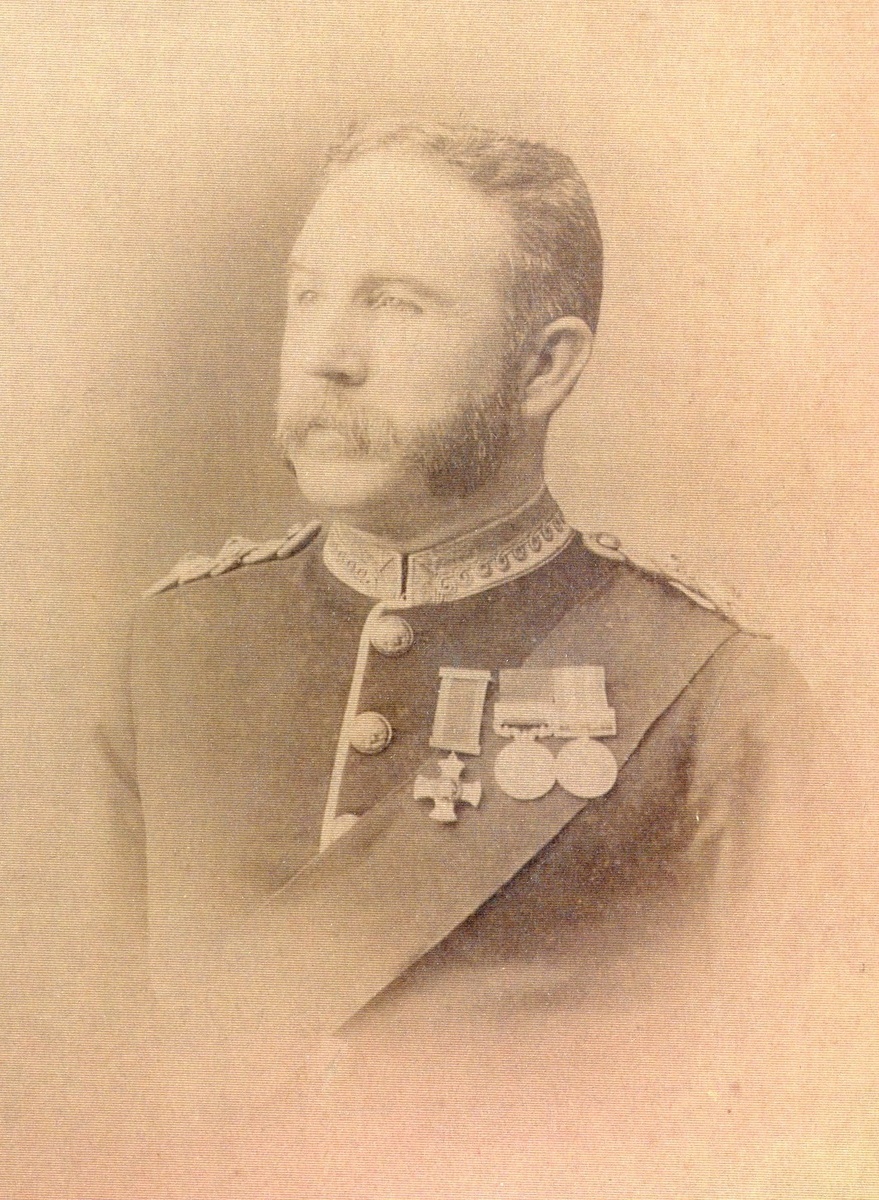Auction: 17003 - Orders, Decorations and Medals
Lot: 684
'Colonel Bennett always took a keen interest in shooting, being himself one of the best shots in the Army and the winner of many important trophies in the matches of the Northern India Rifle Association, as well as a successful big game shot in Kashmir.
An instance of his fine marksmanship in target-shooting was witnessed one day on the rifle range when, as Regimental Musketry Instructor, he was endeavouring to train a batch of third-class shots to make the best of the very inferior, Lee-Enfield rifles which were at that time issued to battalions in India. One of the men, after several tries, failed altogether to get a single shot on target. "How is it, Private Atkins, that you are shooting so badly?" inquired the instructor. "Well, sir," said the man, "I think this 'ere rifle is a very bad one; I can't make nothing of it." Captain Bennett took the rifle from the man with his right hand only, put it to his shoulder, and without touching it at all with his other hand, aimed at the target, and immediately made a bull's-eye. "I don't think there is much fault to be found with that rifle," he remarked to the greatly surprised Mr. Atkins.'
Creagh, Sir O'Moore, and Humphris, E.M., The Distinguished Service Order 1886-1923, refers.
An extremely rare gold Victorian D.S.O. group of four awarded to Colonel W. Bennett, Yorkshire Regiment - one of the best shots in the British Army - who was decorated for his distinguished command of the 1st Battalion in the action at Giniss in December 1885
Distinguished Service Order, V.R., gold and enamel; India General Service 1854-95, 1 clasp, North West Frontier (Lieut. W. Bennett, 1st Bn. H.M.s 19th Regt.); Egypt and Sudan 1882-89, undated reverse, 1 clasp, The Nile 1884-85 (Lieut. Col. W. Bennett, 1/Yorks. R.); Khedive's Star 1884-86, generally good very fine (4)
D.S.O. London Gazette 26 November 1886:
'For the action at Giniss.'
William Bennett was born in Athlone, Ireland on 15 November 1835. His father, Thomas Bennett, was Quarter-Master in the 14th Light Dragoons but later rose to the rank of Captain.
William enlisted in the 2nd Dragoon Guards on 18 August 1856, aged 20, and, having attained the rank of Lance-Corporal, purchased his discharge in May 1857: as revealed by papers relating to him in the Commander-in-Chief's Memoranda, his father, then stationed in Kirkee, had applied for him to be considered for a commission. That ambition was realised in March 1858, when William was appointed an Ensign in the 1st Battalion, 19th Regiment. Five months later, he joined his unit in India, where he passed in Hindustani and was appointed Regimental Interpreter.
Returning home in early 1862, he obtained a 1st Class Certificate at the School of Musketry, Hythe, the commencement of a career in such skills that saw him being recognised as one of the best shots in the Army.
In early 1865, he re-joined his regiment in India, and was subsequently present in the Hazara operations of 1868 on the North-West Frontier, including the expedition against the Black Mountain tribes (Medal & clasp).
Bennett returned to Hythe in July 1877, as Captain Instructor at the School, and was appointed D.A.A.G. for Musketry at Aldershot in March 1878. He remained similarly employed until gaining his Majority in January 1881, when he re-joined the Yorkshires in Halifax, Nova Scotia.
He was subsequently present in the Nile operations of 1884-85 (Medal & clasp; Khedive's Star), was advanced to Lieutenant-Colonel in March of the latter year and commanded the 1st Battalion with distinction at the battle of Giniss in December. He was awarded the D.S.O.
Having been placed on the Retired List as a Colonel in November 1890, Bennett, a keen traveller, 'visited the Holy Land and many parts of Europe and North Africa'. By 1901 he was living at 96 Redcliffe Gardens, Kensington.
He died of pneumonia and cardiac failure at the Crown Hotel, Ruswarp, Yorkshire on 2 August 1912. An obituary and photograph appeared in the Green Howards Gazette in September 1912; sold with extensive copied research, including medal roll verification.
Reference sources:
Creagh, Sir O'Moore, and Humphris, E.M., The Distinguished Service Order 1886-1923 (London, 1924), p. 4.
Ferrar, Michael Lloyd, Officers of The Green Howards (Belfast, 1931), p. 186.
London Gazette 1886, p. 5975.
The National Archives: WO 31/1170; WO 12/169 and 170; WO 25/870/1.
Green Howards Gazette, Vol XX, p. 92.
Subject to 20% VAT on Buyer’s Premium. For more information please view Terms and Conditions for Buyers.
Sold for
£5,200









